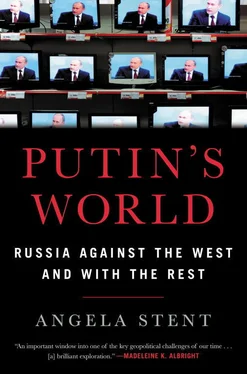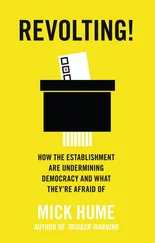Russia is the world’s leading gas exporter and began early on to negotiate with China to build a pipeline. 45But Gazprom and China National Petroleum Corporation were unable to agree on a price, so China turned to Central Asia, concluding a deal for a Turkmenistan-Uzbekistan-Kazakhstan-China pipeline. What changed the equation was Russia’s seizure of Crimea and launch of a war on Eastern Ukraine in 2014. After the United States and its allies imposed sanctions on Russia, the Kremlin decided that it had to turn to China. In May 2014, Russia and China signed a $400 billion deal to build a gas pipeline, the Power of Siberia. It is assumed that Beijing was in a favorable position to achieve most of the goals it had pursued for some years: a cheap price and equities in the deal, including ownership of part of the pipeline infrastructure. 46As of 2019, pipeline construction was proceeding apace, after a slow start. 47
CENTRAL ASIA AND THE SHANGHAI COOPERATION ORGANIZATION
In addition to regulating their bilateral economic and political relations, Russia and China have worked hard to manage ties in their challenging and dangerous common neighborhood. The five states of Central Asia—Kazakhstan, Uzbekistan, Kyrgyzstan, Tajikistan, and Turkmenistan—must balance relations with their two large neighbors. The least developed of the Soviet republics, they struggled to create viable states after the Soviet collapse and have all remained authoritarian polities in which clan politics are paramount. Two of them—Kazakhstan and Turkmenistan—have substantial oil and gas reserves. Until the precipitous decline in oil prices in 2014 and 2015, Kazakhstan was relatively prosperous and focused on modernizing its economy. The subsequent oil price rebound has been reflected in renewed economic growth in Kazakhstan. In addition to the challenge of poverty, interethnic conflicts produced a five-year civil war in Tajikistan and continuing tensions in the Fergana Valley in Kyrgyzstan, where armed conflict between Uzbeks and Kyrgyz has also erupted several times, most recently in 2010.
Another major challenge to the area comes from Islamic fundamentalism. Groups such as the Islamic Movement of Uzbekistan and Hizb ut-Tahrir are designated as terrorist organizations that threaten Central Asia and beyond. Thousands of Central Asians have joined Islamic State and other extremist groups. The ongoing conflict with the Taliban in Afghanistan has exacerbated these problems. Since Beijing has to deal with Uighur separatism and fundamentalism, and Russia faces the ongoing threat of terrorism from the North Caucasus region, both China and Russia are united in supporting Central Asian governments in combating extremism.
For all these reasons, the Shanghai Cooperation Organization (SCO), established in 2001, has become an important pillar of the Sino-Russian relationship. It has recently broadened its reach. India and Pakistan became members in 2017, and Iran, Mongolia, and Afghanistan may follow suit. Its eight members account for 80 percent of Eurasia’s landmass, 43 percent of the world’s population, and a quarter of global GDP. In terms of geographic coverage and population size, it is the largest regional organization in the world. 48
While the SCO was initially founded to manage Russia-China relations in Central Asia, it has expanded not only in membership but in ambition, as a multilateral organization from which the United States is explicitly excluded. By including India, it has the world’s largest democracy, which is intended to diminish the SCO’s reputation as an alliance of autocracies. However, tensions between Russia and China over enlargement remain. India and China continue to have border disputes. India and Russia have traditionally enjoyed close ties, while China and Pakistan have been aligned. This enlargement could add to existing rivalries between Moscow and Beijing and their respective partners. 49Indeed, the India-Russia relationship has apparently impacted the personal outlook of the Russian leader. At the end of the 2015 joint summit SCO-BRICS (Brazil, Russia, India, China, South Africa), Putin reiterated a promise he had made earlier to Indian prime minister Narendra Modi about learning yoga: “They say yoga is the transition from the physical to the spiritual. I am already at the physical, so you can say I am halfway there.” 50
So far, Russia and China have successfully managed their rivalry in Central Asia. Russia retains predominant political influence over the area, given the enduring linguistic, cultural, and personal ties between Moscow and many in the Central Asian elites. But China has become the predominant economic power in Central Asia, given its energy needs, its markets, and investment projects. The Chinese, like the Russians, were wary of the United States’ entry into Central Asia in the 1990s as US companies pursued economic (and especially energy) projects in the region and NATO developed partner relations with several states. Then came the terrorist attacks of September 11, 2001, and Putin’s decision to facilitate the establishment of US military bases in Uzbekistan and Kyrgyzstan, without consulting China. 51For a while, it looked as if the rapprochement between Moscow and Washington in 2001–2002 might have longer-term effects on ties between Beijing and Moscow. But the Putin reset ended with the US invasion of Iraq. 52Until recently, Russia was content to see China expand its economic presence in Central Asia as long as Moscow remained the main security provider. With the US withdrawal from Afghanistan, it appeared that Russia’s military role in Central Asia would be strengthened. It has bases in Kyrgyzstan and Tajikistan and conducts regular military exercises with its partners in the Collective Security Treaty Organization.
THE BELT AND ROAD INITIATIVE
China’s dynamic economic growth and Russia’s economic problems, as well as the impact of Western sanctions, have raised questions about China’s future role in Central Asia. Putin’s major project for his third term, the Eurasian Economic Union, was launched in January 2015. As discussed previously, Russia’s economic difficulties and their impact on its neighbors have hindered the development of the EEU. China in 2013 announced its intention to construct a Silk Road Economic Belt, subsequently known as Belt and Road Initiative (BRI). This ambitious project will eventually link China with Europe and will involve a network of transportation and construction projects, including multibillion-dollar investment deals in Central Asia. In 2014, the Silk Road Fund was launched with a starting capital of $40 billion for a projected network of railway lines, highways, and energy pipelines leading to and from China. While the Central Asian countries were generally enthusiastic about these projects, Russia was more reticent, until Xi and Putin signed an agreement on the integration of the EEU and BRI projects in May 2015. 53However, the two initiatives are quite different. BRI transportation corridors will bypass Russia to the south, so it is unclear how Russia will benefit from this massive infrastructure project. 54However, Russia and China have now agreed that the Northern Sea Route through the Arctic Ocean falls under the BRI project and indeed the Chinese now call it the Polar Silk Road. The BRI is designed to promote globalized trade, financing, and infrastructure and provide markets for Chinese goods. It will inevitably expand Chinese geopolitical influence—all under the rubric of “connectivity.” The EEU is a far more inward-looking trade integration project designed to cement Russia’s influence in Central Asia.
In May 2017, Xi hosted twenty-nine heads of state or governments and the heads of the International Monetary Fund and the World Bank as well as the UN secretary-general at the first Belt and Road Forum in Beijing. 55Putin gave a keynote speech in which he praised the initiative: “We welcome China’s One Belt, One Road initiative. By proposing this initiative, President Xi Jinping has demonstrated an example of a creative approach toward fostering integration in energy, infrastructure, transport, industry, and humanitarian collaboration.” 56The Russian ambassador to China stressed that Russia and China were equal partners in this endeavor and that the BRI would not be detrimental to Russian interests. 57However, it remains unclear what Russia will gain from this ambitious project. The author attended two Russia-China conferences organized by the Russian International Affairs Council in 2016 and 2017, where the Chinese side went to great lengths to present elaborate PowerPoint slides on a wide range of BRI projects that would involve and benefit Russia. The Russian side remained skeptical. 58Indeed, the Chinese have rejected forty infrastructure projects proposed by the Russians. 59Nevertheless, the BRI appears to be a protean concept, broad enough to encompass Chinese investment in Russian energy and infrastructure projects. So far, the Chinese have built a dry port in Khorgos in Kazakhstan and plan more investments in Central Asia. They also have completed projects in Hungary, Pakistan, Iran, and Sri Lanka.
Читать дальше












